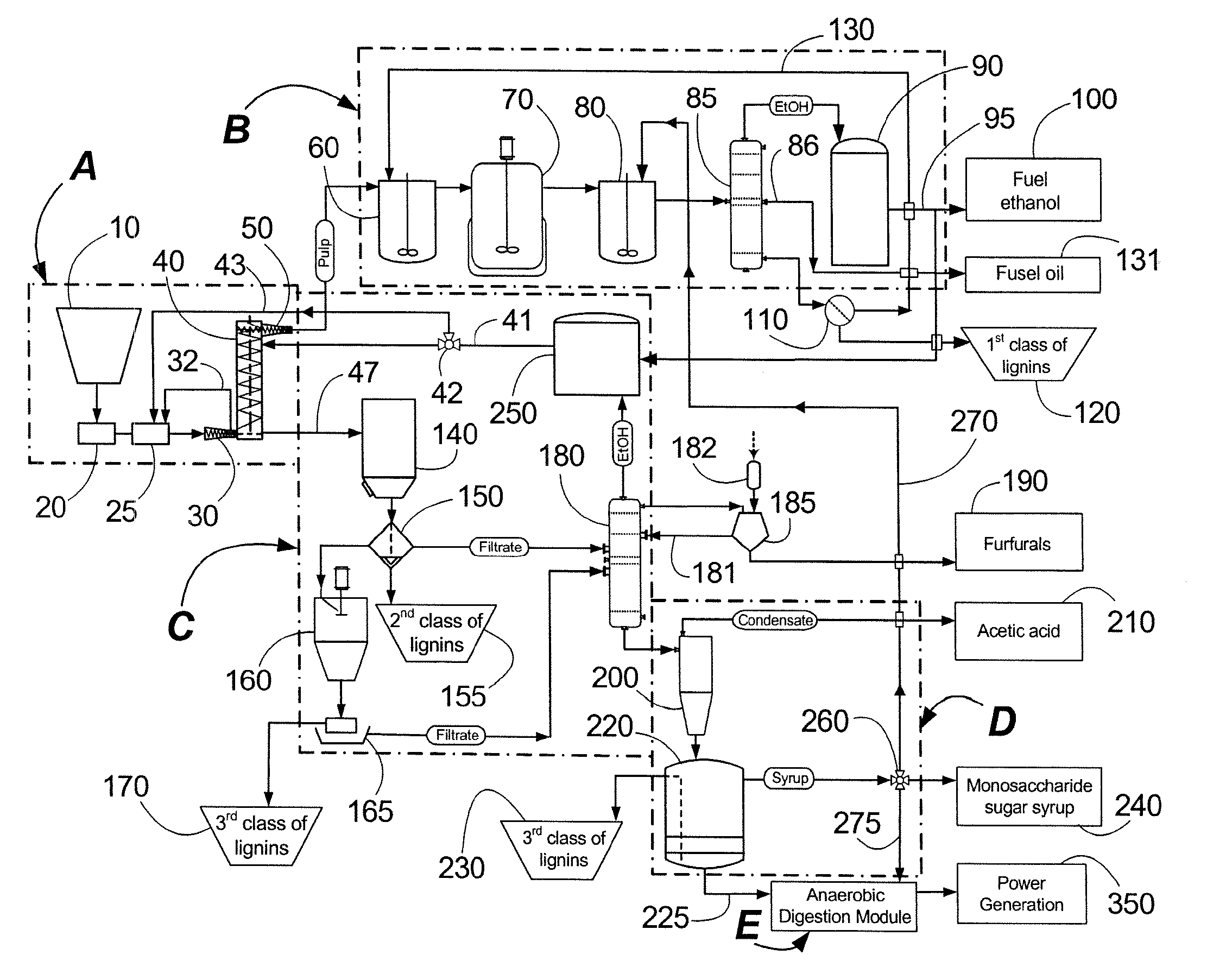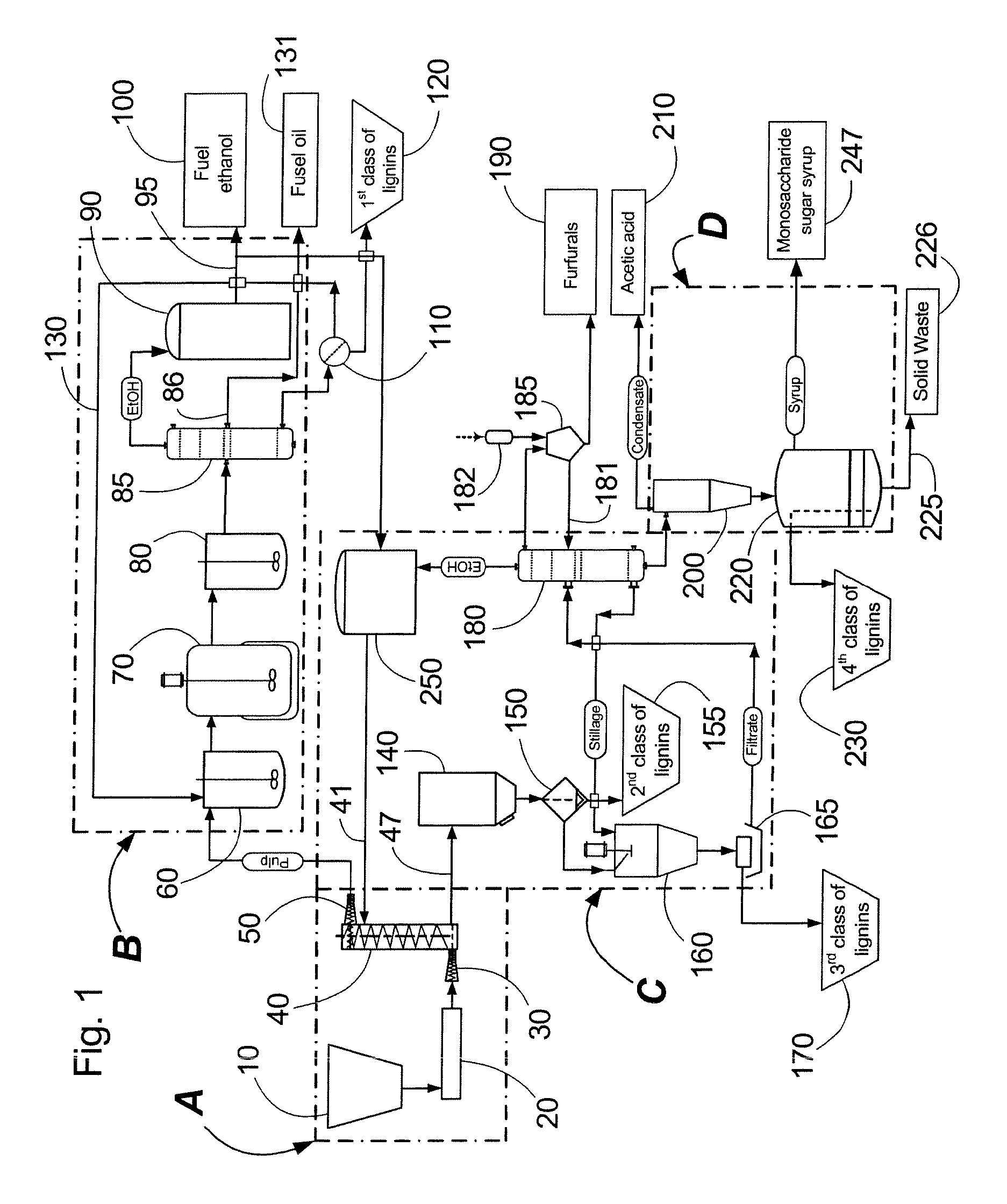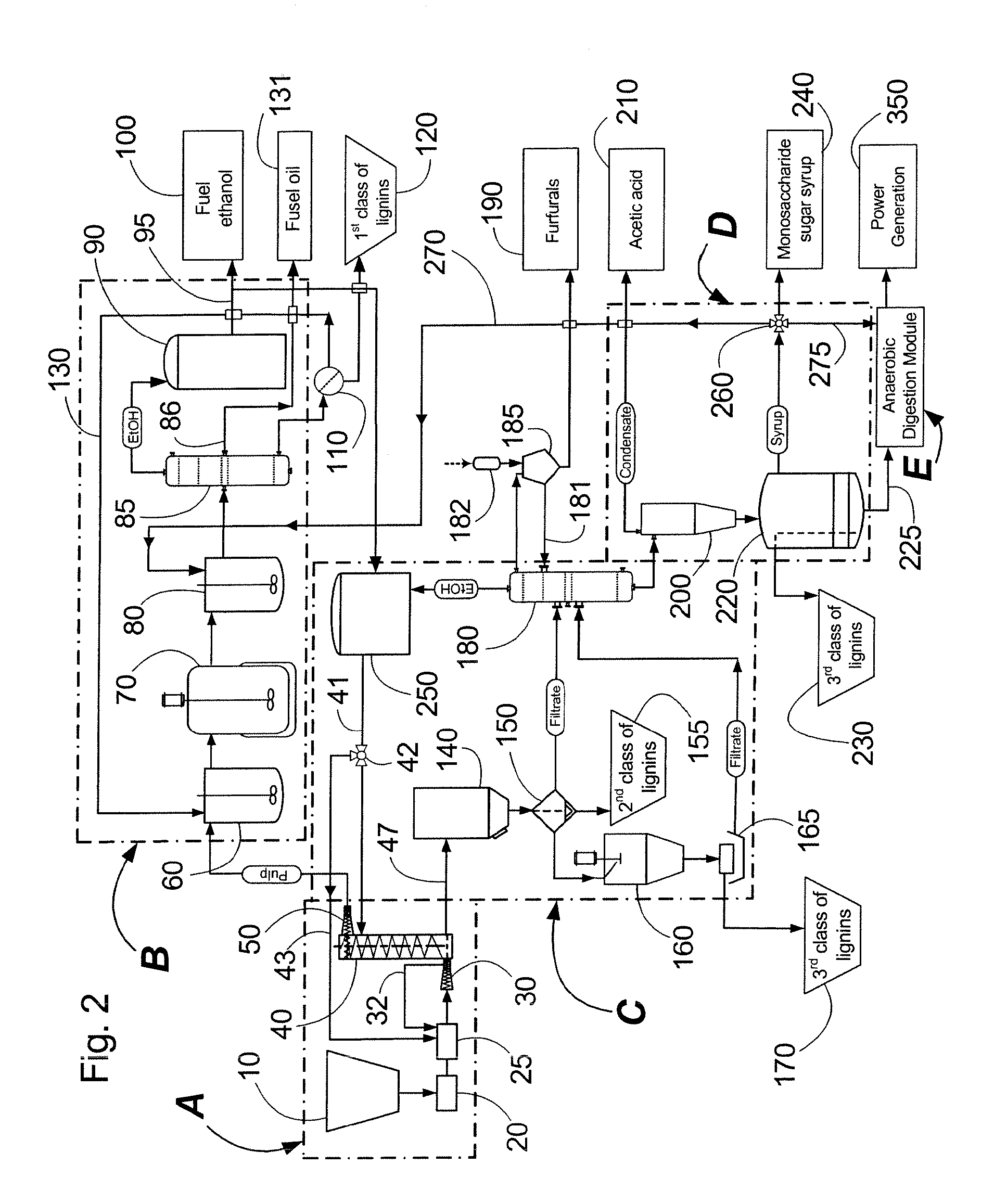Continuous counter-current organosolv processing of lignocellulosic feedstocks
a technology of organosolv and lignocellulosic feedstock, which is applied in the field of lignocellulosic feedstock fractionation, can solve the problems that the current available biorefining process and system is not yet economically attractive, and achieve the effects of facilitating and enhancing the rates/or fermentation yields, and facilitating and enhancing the rate of concurrent fermentation and/or fermentation efficiencies
- Summary
- Abstract
- Description
- Claims
- Application Information
AI Technical Summary
Benefits of technology
Problems solved by technology
Method used
Image
Examples
Embodiment Construction
[0038]Exemplary embodiments of the present invention relate to systems, processes and equipment configurations for receiving and controllably commingling lignocellulosic feedstocks with counter-flowing aqueous organic solvents, thereby fractionating the lignocellulosic feedstocks into component parts which are then subsequently separated. The separated component parts are further selectively, controllably and manipulably processed. The exemplary embodiments of the present invention are particularly suitable for separating out from lignocellulosic feedstocks at least four structurally distinct classes of lignin component parts with each class comprising multiple derivative lignin compounds, while concurrently providing processes for converting other component parts into at least fuel-grade ethanol, furfurals, and monosaccharide sugar streams.
[0039]An exemplary modular processing system of the present invention is shown in FIG. 1 and generally comprises four modules A-D wherein the fi...
PUM
 Login to View More
Login to View More Abstract
Description
Claims
Application Information
 Login to View More
Login to View More - R&D
- Intellectual Property
- Life Sciences
- Materials
- Tech Scout
- Unparalleled Data Quality
- Higher Quality Content
- 60% Fewer Hallucinations
Browse by: Latest US Patents, China's latest patents, Technical Efficacy Thesaurus, Application Domain, Technology Topic, Popular Technical Reports.
© 2025 PatSnap. All rights reserved.Legal|Privacy policy|Modern Slavery Act Transparency Statement|Sitemap|About US| Contact US: help@patsnap.com



